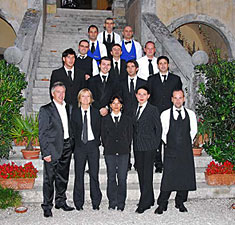The fossils that make up the collection of the Museum Pierluigi Malinverni come all from the deposit located in the area of Chiavon White together with the stream Chiavon Black, which are located in the volcanic complex of Marosticano Western.
The stream was born around 1 km north from the place Valle di Sopra and from there it divides him crossing predominantly calcareous rocks and layers of very permeable coarse deposits. Following the path of Chiavon White toward the valley rocky layers are meet of different origin and formation more recent: the Biancone (in the area of the sources, witness of the presence of an open sea during the Cretaceous inferior), the red flake ( in the area of Valle di Sopra, rock of the Cretaceous superior), the Limestone of Pradelgiglio (dating back to the Eocene), the formation of Calvene (to the height of the line Valle del Ponte - Valle di Sotto- Mare, originated between Eocene and Oligocene) and finally the formation of Salcedo, the area where the layer from, which the present fossils originate in the museum. It is composed of a complex of rocks very various, mostly carbonate and volcanic rocks. Its chronological dating it postpones to 25-35 million years ago, to the periodof the Middle Oligocene, Tertiary or Cenozoic era. During this period, the physical environment and geographical complex Marosticano suffered significant changes, it developed shallow marine areas where they began to develop frequent volcanic phenomena. In the new environment the effusive activity was not constant and during quiescence were deposited between a casting and the other levels of carbonate very obvious and fairly constant over the entire area. These calcareous layers and calcareous-marmorosi they are not the same that constitute the layer fossil of the Chiavon Bianco. Besides the favorable chemistry of the sea waters, the peculiarity of the recoveries fossils of these zones ( the state of optimal maintenance and often perfect of the rests) it is attributed to the characteristics of deposition of the sediments, generally calm and with the speed of very tall sedimentation. It deals with conditions applications so that not to destroy the organic rests in decomposition.
|










